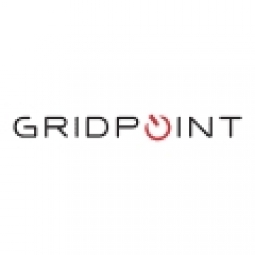Technology Category
- Cybersecurity & Privacy - Identity & Authentication Management
- Platform as a Service (PaaS) - Application Development Platforms
Applicable Industries
- Equipment & Machinery
- Retail
Applicable Functions
- Facility Management
- Procurement
Use Cases
- Building Energy Management
- Retail Store Automation
Services
- Hardware Design & Engineering Services
About The Customer
The customer is a top retailer based in Minnesota with nearly 2000 stores and 50 supply chain facilities across the US. The average retail store is 130,000 square feet, and the company is also rolling out smaller format stores in higher-density areas. They offer a wide variety of products from clothing to health and beauty items to groceries and supplies for the home. They aim to deliver outstanding value, continuous innovation, and exceptional guest experiences. The company has an internal ESG strategy, which includes a commitment to being net zero by 2040.
The Challenge
The Minnesota-based national retail chain, with nearly 2000 stores and 50 supply chain facilities across the US, was committed to achieving net zero by 2040. To reach this goal, the retailer had been implementing energy-saving strategies in their existing and new store designs since the 1990s. However, they faced challenges in managing their path to net zero. They were using utility bill data, engineering estimates, and energy modeling to plan, implement, and validate capital investments in energy-consuming assets and confirm ongoing operational efficiency. However, they lacked clear benchmarks for success. Additionally, they were deploying significant refrigeration equipment as part of their strategy to bring fresh groceries to every store, but they did not have a portfolio-wide view of energy-consuming assets to measure the full impact on energy usage. They needed an enterprise platform that provides asset-level, real-time data to support this deployment.
The Solution
In 2008, the retailer engaged GridPoint to implement a cost-effective, data-rich strategy that could grow into the future. GridPoint worked with the retailer to address each objective and goal. They rolled out asset-level submetering to verify and audit how much energy stores consume, understand real-time energy use at the equipment level, and track efficiency over time. GridPoint’s submetered data enabled the retailer to better understand their facilities at a granular level, guiding their sustainability strategy and making their facilities more efficient, all while rolling out their grocery concepts and pursuing long-term net-zero goals. The retailer also engaged GridPoint’s Energy Advisory Services team to help keep their facilities running smoothly by validating savings, continually analyzing the data, identifying efficiency opportunities, and correcting performance issues.
Operational Impact

Case Study missing?
Start adding your own!
Register with your work email and create a new case study profile for your business.
Related Case Studies.

Case Study
Smart Water Filtration Systems
Before working with Ayla Networks, Ozner was already using cloud connectivity to identify and solve water-filtration system malfunctions as well as to monitor filter cartridges for replacements.But, in June 2015, Ozner executives talked with Ayla about how the company might further improve its water systems with IoT technology. They liked what they heard from Ayla, but the executives needed to be sure that Ayla’s Agile IoT Platform provided the security and reliability Ozner required.

Case Study
IoT enabled Fleet Management with MindSphere
In view of growing competition, Gämmerler had a strong need to remain competitive via process optimization, reliability and gentle handling of printed products, even at highest press speeds. In addition, a digitalization initiative also included developing a key differentiation via data-driven services offers.

Case Study
Predictive Maintenance for Industrial Chillers
For global leaders in the industrial chiller manufacturing, reliability of the entire production process is of the utmost importance. Chillers are refrigeration systems that produce ice water to provide cooling for a process or industrial application. One of those leaders sought a way to respond to asset performance issues, even before they occur. The intelligence to guarantee maximum reliability of cooling devices is embedded (pre-alarming). A pre-alarming phase means that the cooling device still works, but symptoms may appear, telling manufacturers that a failure is likely to occur in the near future. Chillers who are not internet connected at that moment, provide little insight in this pre-alarming phase.

Case Study
Premium Appliance Producer Innovates with Internet of Everything
Sub-Zero faced the largest product launch in the company’s history:It wanted to launch 60 new products as scheduled while simultaneously opening a new “greenfield” production facility, yet still adhering to stringent quality requirements and manage issues from new supply-chain partners. A the same time, it wanted to increase staff productivity time and collaboration while reducing travel and costs.

Case Study
Integration of PLC with IoT for Bosch Rexroth
The application arises from the need to monitor and anticipate the problems of one or more machines managed by a PLC. These problems, often resulting from the accumulation over time of small discrepancies, require, when they occur, ex post technical operations maintenance.

Case Study
Robot Saves Money and Time for US Custom Molding Company
Injection Technology (Itech) is a custom molder for a variety of clients that require precision plastic parts for such products as electric meter covers, dental appliance cases and spools. With 95 employees operating 23 molding machines in a 30,000 square foot plant, Itech wanted to reduce man hours and increase efficiency.



